Ruger 57 Cobalt Blue 20 Round Pistol, 4.94" Barrel – 16409 For Sale
$719.99
The Ruger 57 Cobalt Blue 20 Round Pistol is a testament to Ruger’s commitment to quality and innovation, offering reliability and a sleek design for an exceptional shooting experience. Featuring a 4.94″ barrel and Ruger’s Secure Action fire-control system, it combines a protected internal hammer with a bladed-safety trigger for a short, smooth pull and precise shooting. The pistol boasts impressive ergonomics, including an easy trigger reach, 1911-style ambidextrous safety, robust slide release, and reversible magazine release, catering to both right and left-handed users. The alloy steel barrel, treated with black nitride, enhances durability and wear resistance, ensuring consistent performance. Its striking cobalt blue finish adds visual appeal, making it an ideal choice for both seasoned shooters and newcomers.
Is a 5.7 more powerful than a 9mm?
The comparison between a 5.7mm and a 9mm cartridge depends on several factors, such as the specific context in which you’re considering “powerful” and the types of ammunition used. Generally:
– **5.7x28mm**: Known for its high velocity and low recoil, it can penetrate body armor with certain types of ammunition. It’s often used in scenarios where penetration is prioritized.
– **9mm Luger (9x19mm Parabellum)**: A widely used pistol cartridge that is generally known for good stopping power, wide availability, and controllable recoil.
In terms of raw kinetic energy, a modern 9mm cartridge often delivers more energy than a 5.7mm round. However, the 5.7mm might penetrate armor better due to its design and velocity.
Thus, whether a 5.7 is “more powerful” depends on what characteristics (e.g., stopping power, penetration) are more important for your needs.
What is the 5.7 x28 good for?
The 5.7x28mm cartridge is known for several advantages:
1. **Pistol and Carbine Compatibility**: It’s used in both handguns, like the FN Five-seveN, and carbines, such as the FN P90, offering flexibility in platform choices.
2. **High Velocity and Flat Trajectory**: The cartridge is designed to achieve high velocity, resulting in a flat trajectory which enhances accuracy over extended ranges compared to many other handgun calibers.
3. **Low Recoil**: The 5.7x28mm produces significantly less recoil than larger caliber pistol rounds, aiding in rapid target reacquisition and improved control, especially useful in defensive situations.
4. **Increased Capacity**: Firearms chambered in this caliber often have larger magazine capacities, providing an advantage in situations that may require multiple shots without frequent reloading.
5. **Lightweight Ammunition**: The design allows for carrying more rounds with less added weight and bulk, which is advantageous for military, law enforcement, or personal defense scenarios.
6. **Penetration Capabilities**: The cartridge was originally designed to penetrate body armor, which can be beneficial for certain law enforcement and military applications.
These characteristics make the 5.7x28mm suitable for a variety of uses, including personal defense, tactical operations, and recreational shooting.
Is the Ruger 57 good for self-defense?
The Ruger 57 can be a suitable option for self-defense depending on individual preferences and circumstances. It features a 5.7x28mm cartridge, which offers higher velocity and lower recoil compared to some other handgun calibers. It also has a high-capacity magazine, typically holding 20 rounds. However, its larger size might not be ideal for concealed carry for some users. As always, it’s important to consider factors such as ease of use, comfort, and legal regulations when selecting a self-defense firearm.
Can a civilian own a FN-57?
Yes, a civilian can own an FN Five-seveN pistol in the United States, provided they comply with federal, state, and local laws regarding firearm ownership. Potential buyers must go through a background check and adhere to age and other legal requirements for purchasing a handgun. Laws can vary significantly by location, so it is important for individuals to be aware of and comply with the specific laws governing firearms in their area.
Will 5.7 x28 stop a bear?
The 5.7x28mm cartridge is generally not recommended for stopping a bear. This cartridge is designed for use in small-caliber firearms and is more suited for self-defense against human targets rather than large game. Bears are powerful animals with thick hides and substantial muscle mass, requiring a more powerful cartridge for effective defense, such as the .44 Magnum, .454 Casull, or larger rifle calibers specifically designed for big game hunting. In a situation involving a bear, using a firearm chambered in a larger, more powerful caliber is advisable for better stopping power and protection. Always prioritize safety and consult with wildlife experts when preparing for encounters with wildlife.
What caliber is a 5.7 x28 equivalent to?
The 5.7x28mm cartridge is not directly equivalent to any specific caliber commonly used in firearms. The bullet diameter of the 5.7x28mm is approximately 0.224 inches, which is similar to the .22 caliber bullets used in .223 Remington or 5.56x45mm NATO cartridges. However, the 5.7x28mm is a unique cartridge with its own specifications and is primarily used in firearms like the FN P90 and FN Five-seveN. It is known for its high velocity and low recoil characteristics.
Will 5.7 penetrate body armor?
The ability of a 5.7x28mm round to penetrate body armor depends on several factors, including the type of body armor and the specific 5.7x28mm ammunition used. Generally speaking:
1. **Soft Body Armor**: Standard soft body armor, typically rated Level IIA to Level IIIA, is designed to stop handgun rounds. Certain types of 5.7x28mm ammunition, especially armor-piercing variants like the SS190, can penetrate soft body armor. However, civilian access to armor-piercing ammunition is restricted in many places.
2. **Hard Body Armor**: Hard body armor, rated Level III or higher, is designed to protect against rifle rounds. It is much less likely that a 5.7x28mm round could penetrate this type of armor, especially if it is rated to stop rifle threats.
Overall, the capability of the 5.7x28mm to penetrate body armor depends significantly on the armor’s rating and the ammunition type.
What is the difference between a 223 and a 5.7 x28?
The .223 Remington and the 5.7x28mm are both rifle cartridges but are designed for different applications and have different characteristics:
1. **Origin and Purpose:**
– **.223 Remington:** Designed in the 1950s, it is a widely used cartridge for rifles, particularly in AR-15 style platforms. It’s used extensively for varmint hunting and target shooting.
– **5.7x28mm:** Developed by FN Herstal in the late 1980s, it was designed for personal defense weapons (PDWs) and as a replacement for 9x19mm Parabellum in certain military applications.
2. **Size and Dimension:**
– **.223 Remington:** This cartridge is larger, typically using bullets around 55 to 77 grains in weight with a case length of 45mm.
– **5.7x28mm:** More compact, designed for both handguns and rifles, it typically uses lighter bullets around 23 to 40 grains with a case length of 28mm.
3. **Velocity and Range:**
– **.223 Remington:** Known for its high velocity and flatter trajectory, which makes it suitable for medium to long-range shooting.
– **5.7x28mm:** Faster than most handgun cartridges with moderate velocity suitable for short to medium-range applications.
4. **Applications:**
– **.223 Remington:** Common in civilian, law enforcement, and military use primarily for rifles.
– **5.7x28mm:** Used in specialized weapons like the FN P90 PDW and FN Five-seveN pistol, often in scenarios where lightweight, high-capacity firearms are advantageous.
5. **Recoil:**
– **.223 Remington:** Generally has more recoil than 5.7x28mm due to its larger size and power.
– **5.7x28mm:** Offers low recoil, making it easier to control, especially in automatic or semi-automatic firearms.
Overall, the choice between .223 and 5.7x28mm depends on the intended use, with .223 being better suited for longer-range and more powerful applications, and 5.7x28mm fitting roles that prioritize low recoil and compact firearm designs.
How lethal is the 5.7 round?
The 5.7×28mm round, developed by FN Herstal, is known for its unique combination of features that contribute to its performance and potential lethality. It was designed to provide a balance between penetration, stopping power, and low recoil. The lethality of the 5.7 round can be understood in several contexts:
1. **Penetration:** The 5.7×28mm round was initially developed to penetrate body armor. It has a relatively high velocity, which contributes to its ability to penetrate certain types of ballistic armor when compared to many traditional pistol rounds.
2. **Stopping Power:** While it has less raw energy than larger calibers like the 9×19mm Parabellum or .45 ACP, the 5.7 round’s design, including its velocity and bullet type, aims to provide effective stopping power by causing significant internal damage.
3. **Low Recoil:** The relatively low recoil of the 5.7 round allows for better control and faster follow-up shots, which can be advantageous in defensive situations or tactical scenarios.
4. **Versatility:** The round is used in various firearms, such as the FN P90 and the FN Five-seven pistol, offering versatility for different operational roles, from military to law enforcement to civilian use.
5. **Comparative Lethality:** In comparison to other calibers, its lethality can vary based on the specific scenario—such as distance, the presence of body armor, and the type of ammunition used (e.g., FMJ, hollow point, tracer).
Overall, the lethality of the 5.7 round involves a combination of penetration capability and controlled accuracy, making it a specialty round with distinct advantages in certain applications. However, like any ammunition, its effectiveness will depend on various factors, including shot placement and target characteristics.
What is more powerful than a 9mm?
A .45 ACP (Automatic Colt Pistol) is generally considered more powerful than a 9mm in terms of stopping power and bullet energy. Additionally, calibers like the .40 S&W or 10mm Auto also offer greater power compared to a 9mm.
How lethal is the 5.7 round?
The 5.7×28mm round, developed by FN Herstal, is known for its high velocity and ability to penetrate body armor. It is used in firearms like the FN Five-seveN pistol and the FN P90. The lethality of this round depends on various factors, including the specific ammunition type, range, and target conditions. It is considered effective for personal defense and law enforcement due to its balanced capabilities of penetration and low recoil, but its overall lethality can vary based on situational factors.
Why is the 5.7 mm so popular?
The 5.7mm cartridge is popular for several reasons:
1. **High Velocity and Flat Trajectory**: The 5.7mm cartridge is known for its high velocity, which results in a flat trajectory and improved accuracy at longer ranges.
2. **Low Recoil**: It offers relatively low recoil, making it easier to control during rapid fire and improving accuracy for follow-up shots.
3. **Armor Penetration**: The cartridge is designed to penetrate body armor, which makes it appealing for military and law enforcement use.
4. **Lightweight and Compact**: Due to its smaller size and weight, it allows for higher magazine capacities without significantly increasing the weight of the firearm.
5. **Versatility**: It can be used in various platforms, including handguns and submachine guns, providing versatility for different tactical scenarios.
6. **Innovative Design**: Originally developed for a specific niche (personal defense weapons), its design expands the possibilities for both military and civilian markets.
These attributes combine to make the 5.7mm an attractive choice for both professionals and enthusiasts looking for a balance of performance, capacity, and manageability in a firearm cartridge.
Is 5.7 bigger than 223?
No, 5.7 is smaller than 223.
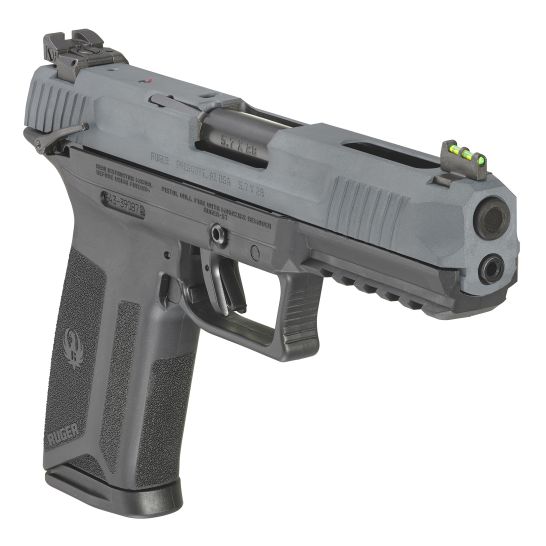
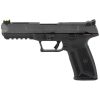
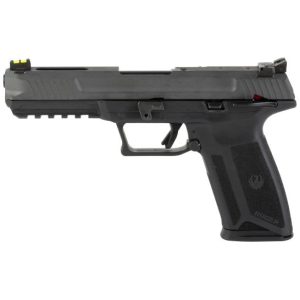
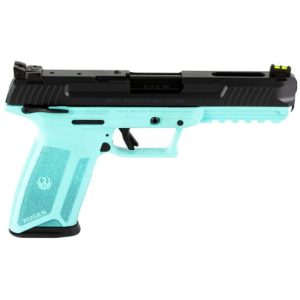
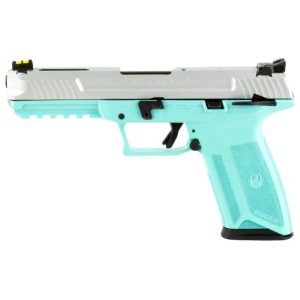
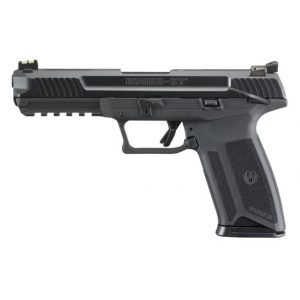
Reviews
There are no reviews yet.